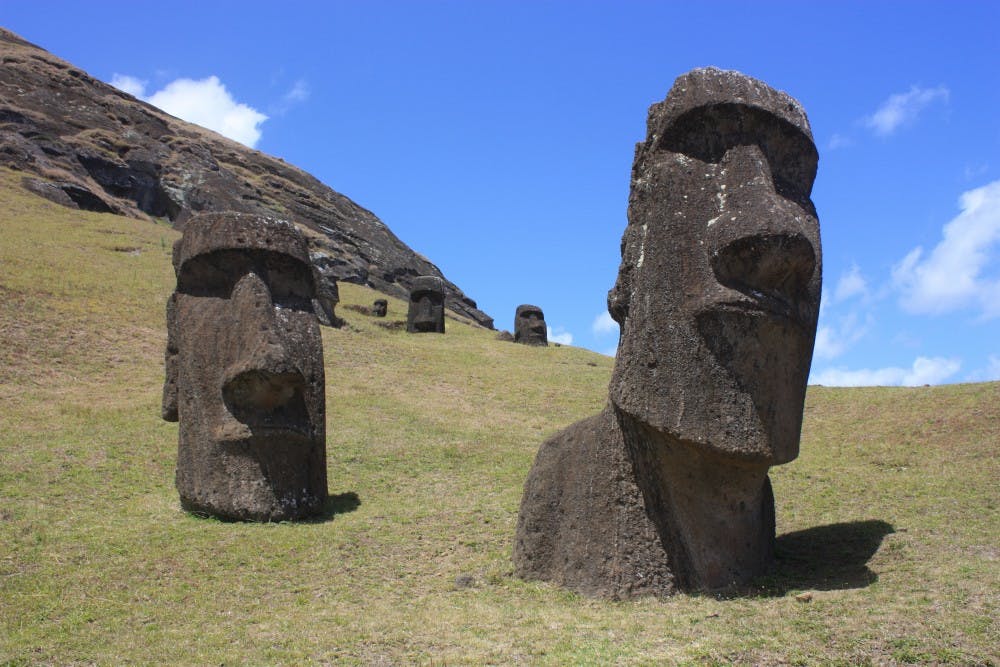In a new study, published in Current Biology, geneticists at the University of California, Santa Cruz (UC Santa Cruz) have delved into the ancestry of the people of Easter Island. They used genomics to prove that the Polynesians on the island had no contact with the indigenous peoples of South America prior to 1722.
As ancient peoples developed the technology to travel, they began to settle all over the world. Anthropologists believe that a group of people called the Austronesian Polynesians, who came from the Marquesas Islands in French Polynesia, first settled the land around 300 to 400 C.E.
As one of the most isolated geographical locations on Earth, the settlers, also known as the Rapa Nui, lived on the island for centuries. In 1722, the first Dutch explorer, Jacob Roggeveen, arrived. From then on European navigators visited the Rapa Nui every few decades.
Many scientists and historians have surmised that Native South Americans may have had some sort of contact with the Rapa Nui before any Europeans did. Those who hold this opinion base it off the presence of the sweet potato, a plant native to South America, in the diet of the Rapa Nui.
Many have argued that because the sweet potato was a staple of Easter Island cuisine, indigenous peoples most likely had contact with the Rapa Nui before any Europeans arrived to the island.
Recent analysis of genome-wide single-nucleotide polymorphisms, which are where a single nucleotide in DNA differs between individuals, has also shown that today’s Rapa Nui share six percent of their DNA with ancestral Native South Americans.
Scientists have subsequently conjectured that Native South Americans and the Rapa Nui met at some point between 1280 and 1425, long before Roggeveen’s visit in 1722.
However, new research involving analysis of the mitochondrial and autosomal genomes of Rapa Nui skeletons in a study led by Lars Fehren-Schmitz, an associated professor of anthropology at UC Santa Cruz, debunked the theory.
Using bone fragments from the skeletal remains of five men from both pre and post 1722, of which there was only 200 milligrams of bone mass, the team conducted an ancient DNA analysis.
The scientists dated two of the skeletons to the period between 1445 to 1625 and three of the skeletons to the period between 1815 to 1945. All of the mitochondrial genomes displayed the so-called “Polynesian motif.”
Having confirmed that the Rapa Nui descended from Polynesians, the team next checked for markers of Native South American ancestry. They discovered between zero percent and three percent Native South American ancestry compared to eight percent of Native South American ancestry in contemporary Rapa Nui genomes.
“I was pretty surprised when we didn’t find any Native American signals in our pre-contact samples. Honestly, at first I thought I did something wrong with the statistics. Then it was an ‘a-ha moment,’” Fehren-Schmitz said, according to The New York Times.
Fehren-Schmitz suggested that due to the small sample size, the results of the study may inaccurately represent the presence of Native South American ancestry throughout the inhabitants of Easter Island. He presented one of two possibilities.
“Either that exchange didn’t happen or it only happened with specific parts of the population on the island,” Fehren-Schmitz said, according to The New York Times.
Cat Jarman, a doctoral student and archaeologist from the University of Bristol in England and a co-author on the study, thought that the Native American ancestry in the modern DNA of the Rapa Nui may have been caused by European enslavement of the islanders.
“When we look at this modern DNA, it’s not necessarily representative of the population that was there 800 years ago because so much has happened. So many people have moved because of slavery and it’s had a huge genetic impact that we need to take into account when we look at the modern population,” Jarman said, according to The New York Times.
In the future Fehren-Schmitz hopes to do more work to determine precisely when and where the genetic exchange between the Native South Americans and the islanders occurred.
“The most likely scenario is that there wasn’t a single episode. The story is simply more complicated than we expected,” Fehren-Schmitz said, according to The New York Times.





